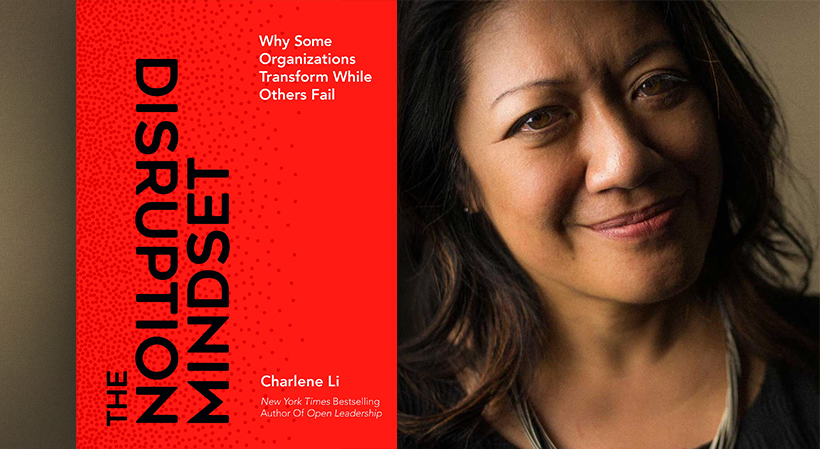The following excerpt has been adapted from “The Disruption Mindset: Why Some Organizations Transform While Others Fail” by Charlene Li for StartupNation.
“Change is the law of life. And those who look only to the past or present are certain to miss the future.”
—John F. Kennedy
Who is your future customer?
As business leaders, we’ve been taught to design certainty and attainability into our business plans and strategies because that’s what we get rewarded for: excellent operational execution. We systematically analyze what went right and what went wrong in the previous year and make adjustments for the coming year. We limit our possibilities because we set strategy by looking in the rear-view mirror.
This approach works great if you are in a stable, slow-changing industry where competitors don’t rock the boat and potential new entrants stay in their lanes. The last time I checked, there were not many industries that fit this description.
As T-Mobile’s growth story suggests, what disruptive transformation organizations do exceedingly well is look confidently into the future to anticipate customer needs that don’t exist today. The further into the future they look, the more disruptive they are.
Of course, it is extremely difficult to accurately predict and define the future. That’s why most organizations shy away from doing so. What if we’re wrong? What if we head down one path and have to change course? I’m not asking you to predict the future. Instead, I’m asking that you make an educated guess about one thing and one thing only: what you think your future customers are going to need. The more confidence you have in your understanding of those future customers, the more likely you will be to choose to chase after them, even at the expense of today’s profitable customers.
In this way, disruption strategy is no different from a traditional strategy. Strategy is simply deciding what you will do and—just as important—what you will not do. A disruptive transformation strategy frames that strategic choice specifically. Which customers will be your priority: your customers today or tomorrow? In T-Mobile’s case, its leaders staked their future on future customers who wanted a more authentic and transparent relationship with their carrier.
This focus on future customers is the one thing that can act as a counterweight against the certainty of revenues and profits coming from today’s customers. How many times have you heard, “We can’t pull resources away from serving our best customers,” or “There’s no time or budget to explore options for the future”? These are the comments of an organization prioritizing today over tomorrow. A focus on future customers is the way to address the classic innovator’s dilemma, where easy profits from existing customers blind incumbents from seeing new competitors inching in, picking off customers on the edge.
Related: Why Focusing on Customer Success Will Pay Off in the Long Run
You have the advantage if you focus on future customers
There are so many things about the future that you cannot control, from what the economy will do to the emergence of new technologies and competitors. The one and only thing that you can completely control is what you choose to focus on.
All of your organization’s energy and resources need to be focused on understanding, identifying and meeting the needs of your future customer. If you can do this, you have a huge advantage. That’s right, incumbents have numerous advantages, but they must be tuned to chasing after future customers, not preserving the status quo.
These advantages include:
Customers
Having the ability to sell to an existing customer who already trusts you is a huge advantage. A subset of your existing customers will likely be your future customers as well, but you must be ready to let them jump over to the new offering, which may result in lower revenue and profits per customer. If you don’t, you make yourself vulnerable to someone else who will.
Brand
New products and services don’t necessarily have to have a new brand; they could be a sub-brand or morph into a house of brands. But it can be tricky evolving the brand to meet future customer needs. T-Mobile leveraged its brand equity and awareness but also had to overcome a legacy of poor quality and poor coverage with existing and former customers by repositioning itself as the “Un-carrier.”
A strategy that focuses on future customers frees an organization to use all of its assets and scale to go after that customer. This is one of the reasons the biggest disruptive players, like Amazon, Apple, Facebook, Google, and Netflix, keep getting bigger. They have the scale, brand, customer relationships, and cash to continually reinvest in the engine that drives new growth initiatives.
Sign Up: Receive the StartupNation newsletter!
“The Disruption Mindset: Why Some Organizations Transform While Others Fail” is available now wherever books are sold and can be purchased via StartupNation.com.






